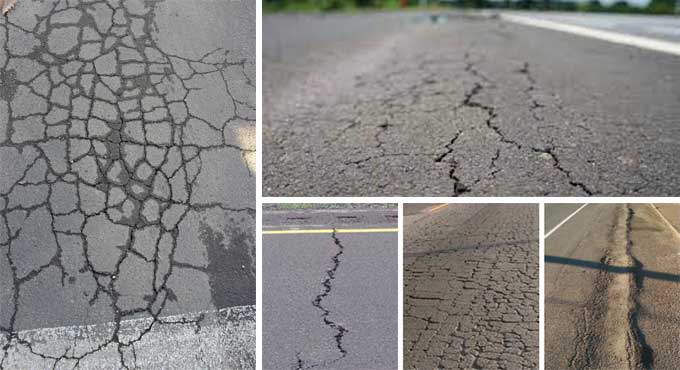
An Overview of the Reasons and Solution of Fatigue Cracking
One of the most common ways asphalt pavement deteriorates over time is fatigue cracking, which can also be called 'alligator' or 'crocodile' cracking. Dropping a hardboiled egg on the ground will cause it to crack in a pattern similar to a reptile's scales. A surface that is allowed to go without maintenance will also develop alligator cracks, which are among the most serious problems that can occur.
Alligator cracks begin as longitudinal cracks or parallel cracks. Keep moisture from entering the pavement by sealing cracks as soon as possible. A pattern of alligators begins to emerge if the process delays. Maintenance costs will grow rapidly at this point, and it is already too late.
Key Reasons of Fatigue Cracking
Pavement longitudinal cracks result from repeated traffic loads along wheel paths.
This pattern of longitudinal cracks results in pieces with a pattern that resembles a Fatigue's skin after repeated loading.
- Pavement support no longer has the capacity to carry its weight because of improper drainage or spring thaw issues.
- Overriding of the anticipated design load on the pavement.
- Pavement designed incorrectly structurally, i.e., too thin to handle load design.
- Pavement construction was poor, such as insufficient compaction and subgrade preparation.
- Paved streets with drains that are not designed correctly.
Surface damage and alligator cracks usually result from laying asphalt without properly preparing the sub-base.
Cracking can also occur due to cold-weather damage. Flooding can deteriorate the asphalt's substructure and weaken the asphalt in the event of a heavy thaw. The problem will become worse if it freezes and thaws repeatedly.
How to Deal with Fatigue Cracking
Generally, the first thing you should do when you see cracks appear in your asphalt is to apply crack filler, if the weather permits, as soon as possible. Additionally, if possible, we encourage motorists to avoid the affected area. Every passing vehicle will damage the asphalt surface unless the weakened area is hit in the worst-case scenario.
Neither one of these measures should take lightly. They are only stop-gap measures. Asphalt repair can only long-term if the underlying problems identify and then strengthen.
Solution of Fatigue Cracking
It mainly causes by excessive loads that Fatigues crack. Fatigue cracking can reduce by certain measures that can reduce the load on asphalt pavements.
- Heavy trucks or semis do not drive on the sidewalk.
- Concrete pavements designs according to load expectations. It is different from preparing an asphalt pavement surface to hold heavy loads, such as cargo trailers, & then what is necessary for passenger cars.
- Increasing pavement drainage to ensure water drains from the sub-base.
- A specialist in asphalt repair should redesign the sub-base to ensure it has sufficient support for the pavement.
- It is crucial to strengthen the asphalt base to control Fatigue cracking issues in the pavement.
- Sealing minor cracks can inhibit their propagation if they are observed. You will need crack filler or a sealant to fix the cracks.
Wrapping it Up
In asphalt pavement, Fatigue cracking results from repeated traffic loading and is an interlaced pattern of cracks. The cracks look like a Fatigue's back cause deterioration to asphalt pavement.
Experts recommend reconstructing a road completely when there is continuous heavy truck traffic. There can be a deeper problem below the asphalt if alligator cracks are visible, especially in highly populated areas. While strengthening the base might seem tedious, premature failure will prevent it.
Video Source: S&G Asphalt


